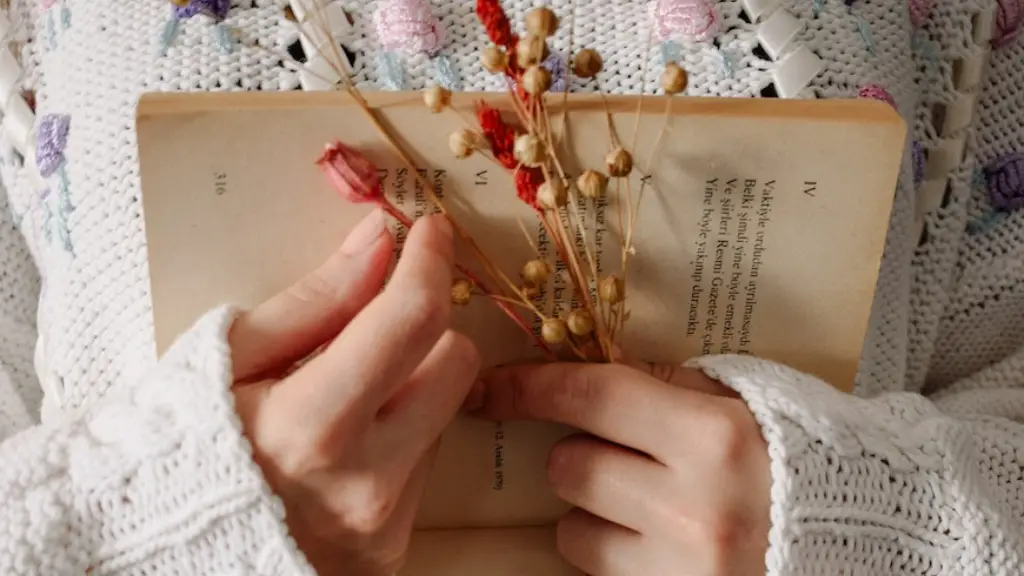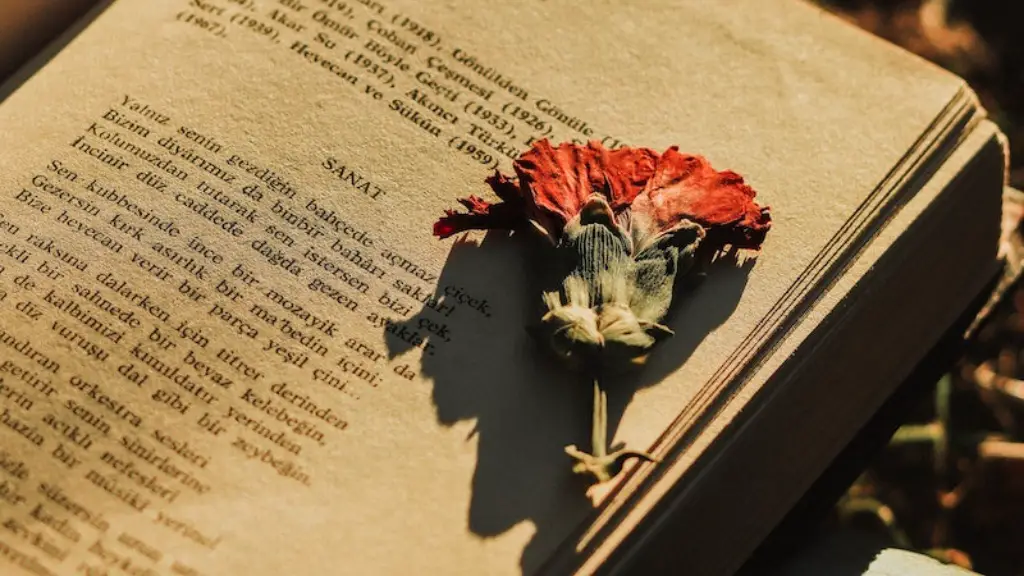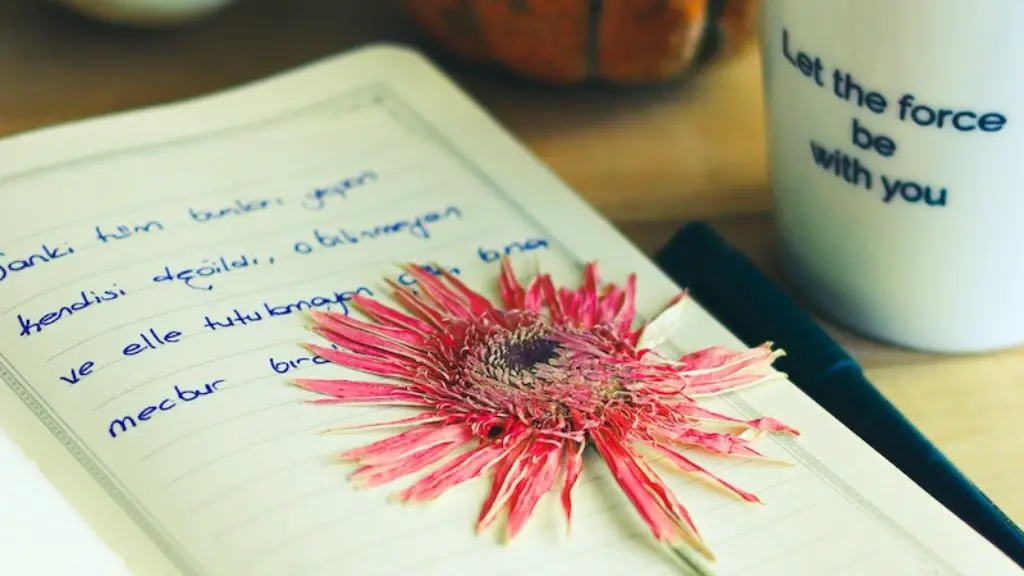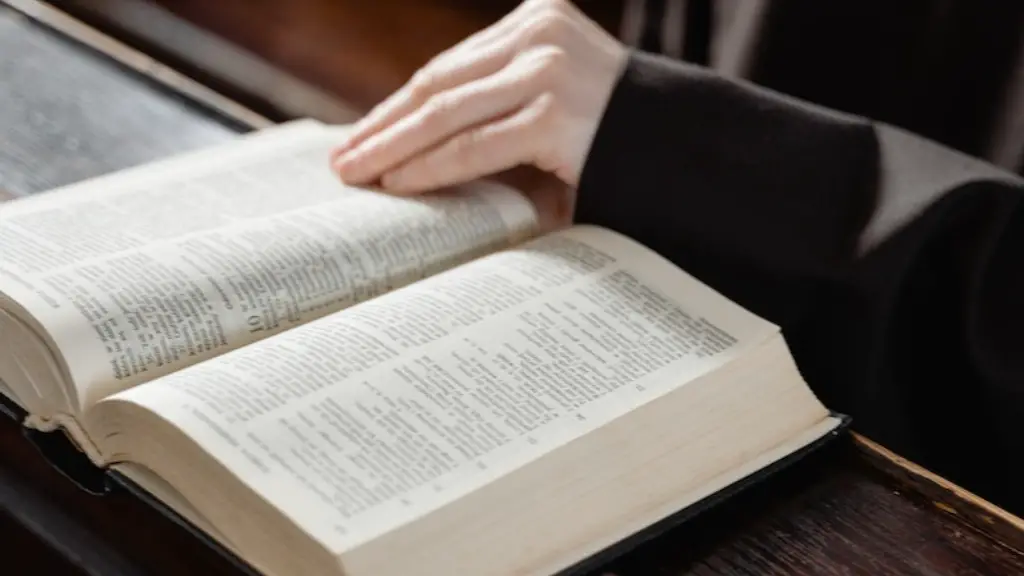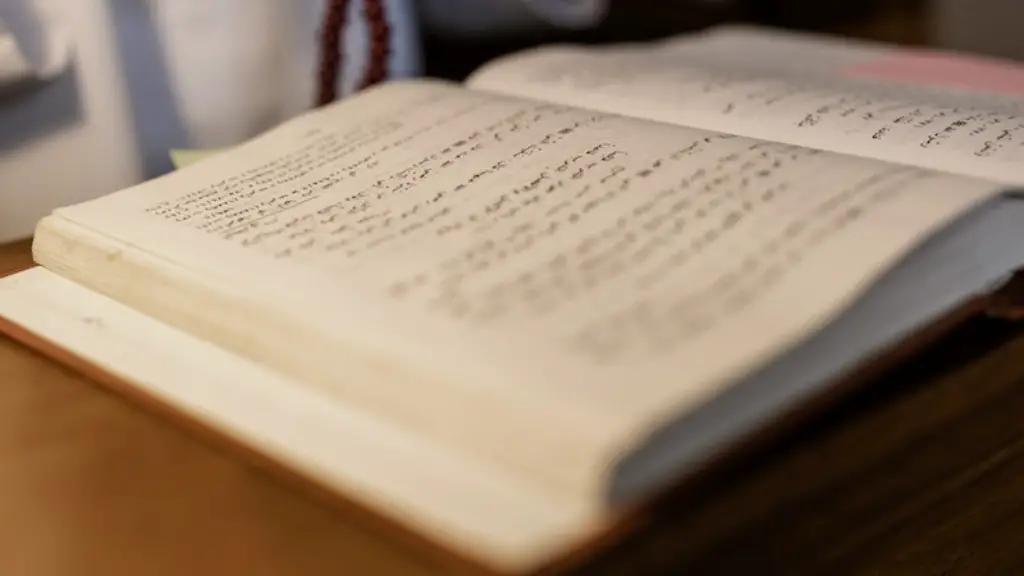What is Assonance in Poetry?
When it comes to the craft of writing a poem, assonance is a vital part of the creative process. Assonance is a form of repetition of vowel sounds within words or sentences, which are close to each other. It’s a powerful tool that can give a poem an almost musical quality, making it enjoyable and easier to read.
Assonance works by echoing certain vowel sounds within the poem. A reader will subconsciously pick up repetitions of particular sound patterns, creating a rhythm-like feel across the whole piece. This is why assonance is a great device for poets because it is a subtle yet effective way to create atmosphere.
The best way to use assonance is to find words that contain a long “e” sound for instance. When these words are strung together, it creates a harmonious sound. Similarly, words with similar vowel sounds, such as “ay” or “ee,” can be used to produce an echoing sound that can bring life to a poem.
Assonance is great for creating subtle hints of musicality without actually using musical notes. So when we read a poem, it can feel as though we are hearing a song, with certain sounds ringing out in majestic tones. This effect is powerful and something which experienced poets use to gain the reader’s attention.
Using assonance can also aid understanding. With words containing similar vowel sounds side by side, the poem becomes easier to understand, as the reader’s attention is already on the vocal patterns of the words. This also makes the poem more cohesive, as the reader is less likely to become confused when connecting ideas together.
Ultimately, assonance is an important device that all poets should consider when crafting their work. With a little practice, anyone can create a poem that is packed full of various assonance effects. And when used correctly, assonance can bring life and energy to the entire piece.
Applications of Assonance
Assonance is found throughout literature in both prose and poetry, giving text a beautiful, melodic quality. It can also be used for emphasis, to draw attention to certain words in a piece. For example, in her poem ‘Hope Is the Thing with Feathers’, Emily Dickinson uses assonance to reinforce the idea of hope: ‘Hope is a thing with feathers/ That perch in the soul…’ She effectively draws the reader’s attention to the word ‘hope’ by repeating the vowel sounds of the word.
Similarly, another application of assonance is to create an alliterative effect. Alliteration occurs when the same consonant sounds are repeated throughout a sentence, or two words are used in close proximity that have the same consonant sounds. This effect can be further enhanced by using assonance, in which similar vowel sounds are repeated repeatedly. This can give an even more musical vibe to the poem.
Assonance can also be used to unify different aspects of a piece, by tying together ideas and images. It can create a sense of cohesion in a poem, by making the sound pattern of the poem more uniform and easier to follow, while simultaneously making the poem more interesting to the reader.
Finally, assonance can help to create a rhythm in poetry. A repetitive sound pattern allows the poem to flow in a smooth, continuous way, making it enjoyable and easier to read. For example, in Robert Frost’s poem ‘Stopping by Woods on a Snowy Evening’, the consonant sound ‘s’ is repeated to help create a rhythm.
Examples of Assonance
To fully understand how assonance works, it’s important to look at examples of poetry that make use of this effect. William Wordsworth’s ‘The Daffodils’ is a great example of assonance being used to create a powerful atmosphere: ‘And then my heart with pleasure fills/ And dances with the daffodils’. The repetition of the ‘i’ sound in both of these lines emphasises the idea of dancing, and the joy of being surrounded by daffodils.
Similarly, we can look at a poem by Edgar Allan Poe; ‘A Dream Within A Dream’ is another great example of assonance. Here, Poe uses the ‘ee’ sound to create a sense of longing and regret: ‘Take this kiss upon the brow!/ And, in parting from you now’. The repetition of the ‘ee’ sound helps to emphasise the idea of parting from someone, which is the main theme of the poem.
Finally, in Emily Dickinson’s popular poem ‘Because I Could Not Stop for Death’, she uses assonance to create a strong sense of death: ‘Because I could not stop for Death/ He kindly stopped for me’. In this case, the repetition of the ‘ee’ sound helps to emphasise the idea of death, making the reader’s experience of the poem more vivid.
How to Use Assonance in Your Writing
Using assonance in your writing is relatively simple. The key is to choose words which contain different vowel sounds, but which are close together in the piece. This will create subtle yet effective assonance effects, which will help to give the poem an almost musical quality.
When using assonance, it’s important to remember that it’s easy to overuse it. To prevent this from happening, it’s best to use assonance sparingly and choose your words carefully. This will ensure that the effect of assonance is balanced and won’t cause the poem to become overwhelming.
It’s also important to consider the tone and atmosphere of the poem. Assonance can be used to subtly evoke emotions within the reader. For example, if you are writing a poem about love, you may choose to use words containing the ‘i’ and ‘ee’ sound, as these sounds can be associated with feelings of intimacy.
Finally, it’s important to practice. Reading other poets’ work and looking for examples of assonance can help you to develop your technique. With enough practice, you’ll start to recognise the different effects that assonance can have on a poem and eventually you’ll be able to create beautiful pieces of poetry that are full of life and energy.
What Are the Benefits of Assonance?
One of the main benefits of using assonance in your poetry is that it can help to create a unique and engaging atmosphere. By using subtle yet effective sound patterns, you can create a poem that is captivating and enjoyable to read. This can make the poem more successful in communicating its message, as the reader is more likely to be drawn in and appreciate the poem’s beauty.
Assonance can also help to emphasise certain themes or ideas in your poem. By repeating certain vowel sounds, you can draw the reader’s attention to particular words or images, which will help to create a stronger impact. This can be particularly effective when writing a poem that has a deeper meaning, such as one about love or death.
Finally, assonance can help to create a sense of rhythm in a poem. By repeating the same vowel sounds throughout the piece, you can create a calming, smooth flow, which can help to make it easier and more enjoyable to read. This is great for those who are starting to write poetry, as it allows them to practice their craft without having to worry about finding the perfect rhyme scheme or structure.
Conclusion
Assonance is an essential tool for any poet and is a great way to bring life, energy and atmosphere to a poem. By repeating certain vowel sounds, the reader’s experience of the poem becomes more vivid, and the poem is more likely to be a success in communicating its message. Assonance can also be used to emphasise particular words or ideas, as well as to create rhythm in a poem. With a little practice, anyone can start crafting beautiful pieces of poetry that make full use of this amazing device.
